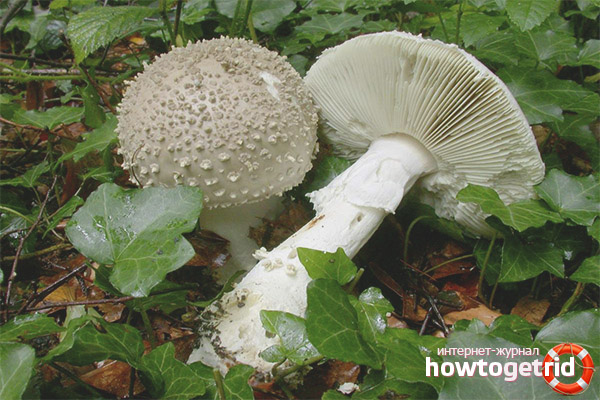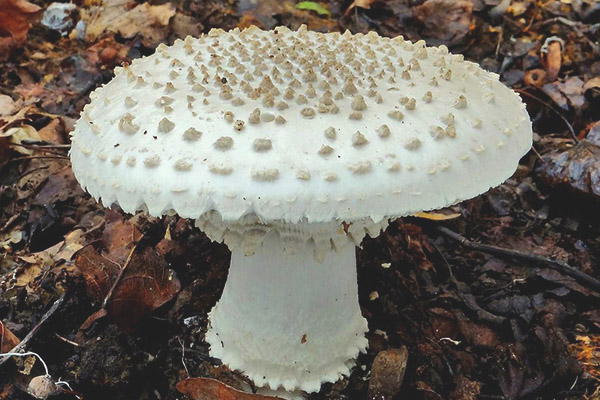The content of the article
Bristly Amanita is one of the species of mushrooms of the Amanita family, which in no case can not be eaten. Amanita prickly head and fat bristly - his other names.
What does a fly agaric of this species look like?
The mushy cap has an almost round shape that unfolds and becomes open. Its length in diameter is from fourteen to sixteen centimeters, and its edges can be both smooth and with very small teeth. Here are the remains of a bedspread in the form of flakes. The thin skin on the cap has a pale white and light gray color, but later becomes a shade of light ocher. It also has a light green color. The surface of the cap is dotted with small and thick bristly pyramid-shaped warts. The spores of such a mushroom are smooth, very small and oval, and their powder, obtained from the fruit of the mushroom mushroom, has a white or cream color.
Directly below it, near the mushroom, there is a hymenophore in the form of a large number of plates next to it, well visible from a distance, the color of which turns from white to turquoise, and then to green with a touch of yellow.
As for the legs of this fungus, which has a white or yellow shade, it begins to thicken and becomes swollen closer to the middle, and in the area of the cap takes on a cylindrical appearance. The height of the leg varies from ten to twenty centimeters, in the girth it has a length from one centimeter to four. The base of the stem is slightly pointed and deep under the ground, and its surface has small white scales that appear when the cuticle begins to crack. A thin ring of white color, covered with small scars and located on the stem, quickly disappears.
Where is growing?
Fat stubble grows usually under oaks in mixed, coniferous or deciduous forests, in the lower zone of mountains in the south, and also near water bodies, rivers and lakes, where soils with high acidity are located.It is very rare to meet this type of mushroom, as it is whimsical and prefers a warm climate. These toadstools usually bear fruit well from June to October.
Places where the spiny-growing fly agaric grows are the southern countries of Europe (for example, Portugal, Spain, Italy, Scandinavia, Germany and the British Isles). In addition, it can be found on the territory of Asia in Israel, Azerbaijan and even in Western Siberia. This species is protected in the Katunsky Reserve in the valley of the Katun River in the Altai Territory.
Is bristly amanita poisonous?

In no case can such a fungus be eaten, since the probability of poisoning is high even after its special treatment. In folk medicine, it is not used for any purpose.
What types are similar?
Pearly Amanita can also be eaten. His hat is convex and has an unusual shade: from yellow it turns into dark brown. In addition, small scales can be found on it, shaped like grains. At the very bottom of the foot is thickened, has a white ring and a soft surface. Unlike the rest of the fly agaric, this mushroom has a light pulp, pleasant to the taste and smell, which reddens slowly when cut. It is able to grow in almost any conditions, so it is found in any forest. The period of fruiting in this species begins in the summer and lasts until the very end of autumn.It is necessary to collect it very carefully, as it has several poisonous twins.











To send